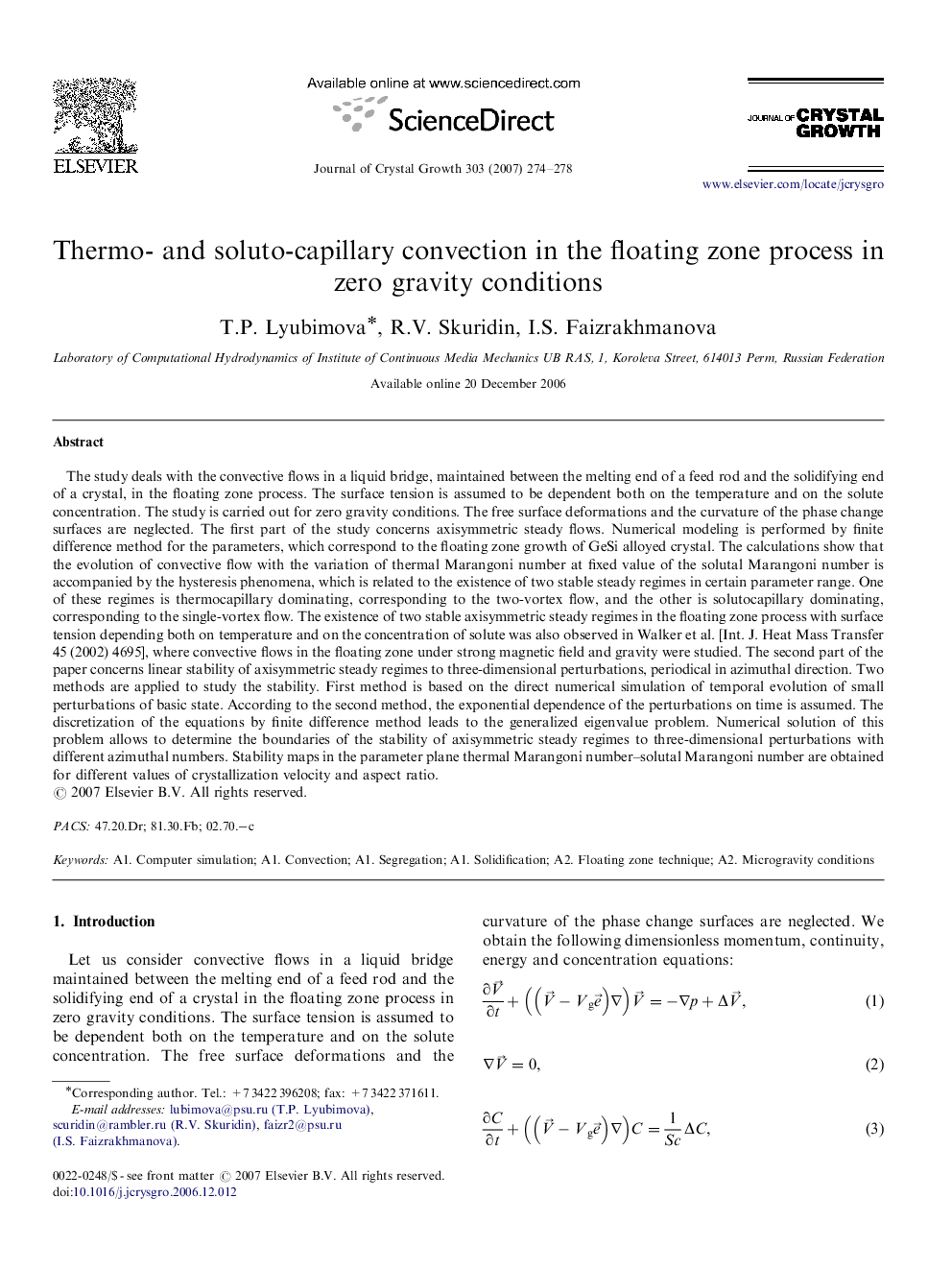| کد مقاله | کد نشریه | سال انتشار | مقاله انگلیسی | نسخه تمام متن |
|---|---|---|---|---|
| 1795812 | 1023729 | 2007 | 5 صفحه PDF | دانلود رایگان |

The study deals with the convective flows in a liquid bridge, maintained between the melting end of a feed rod and the solidifying end of a crystal, in the floating zone process. The surface tension is assumed to be dependent both on the temperature and on the solute concentration. The study is carried out for zero gravity conditions. The free surface deformations and the curvature of the phase change surfaces are neglected. The first part of the study concerns axisymmetric steady flows. Numerical modeling is performed by finite difference method for the parameters, which correspond to the floating zone growth of GeSi alloyed crystal. The calculations show that the evolution of convective flow with the variation of thermal Marangoni number at fixed value of the solutal Marangoni number is accompanied by the hysteresis phenomena, which is related to the existence of two stable steady regimes in certain parameter range. One of these regimes is thermocapillary dominating, corresponding to the two-vortex flow, and the other is solutocapillary dominating, corresponding to the single-vortex flow. The existence of two stable axisymmetric steady regimes in the floating zone process with surface tension depending both on temperature and on the concentration of solute was also observed in Walker et al. [Int. J. Heat Mass Transfer 45 (2002) 4695], where convective flows in the floating zone under strong magnetic field and gravity were studied. The second part of the paper concerns linear stability of axisymmetric steady regimes to three-dimensional perturbations, periodical in azimuthal direction. Two methods are applied to study the stability. First method is based on the direct numerical simulation of temporal evolution of small perturbations of basic state. According to the second method, the exponential dependence of the perturbations on time is assumed. The discretization of the equations by finite difference method leads to the generalized eigenvalue problem. Numerical solution of this problem allows to determine the boundaries of the stability of axisymmetric steady regimes to three-dimensional perturbations with different azimuthal numbers. Stability maps in the parameter plane thermal Marangoni number–solutal Marangoni number are obtained for different values of crystallization velocity and aspect ratio.
Journal: Journal of Crystal Growth - Volume 303, Issue 1, 1 May 2007, Pages 274–278